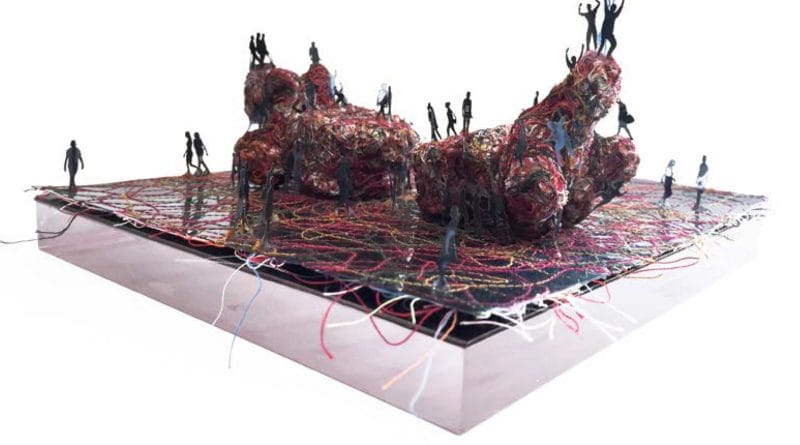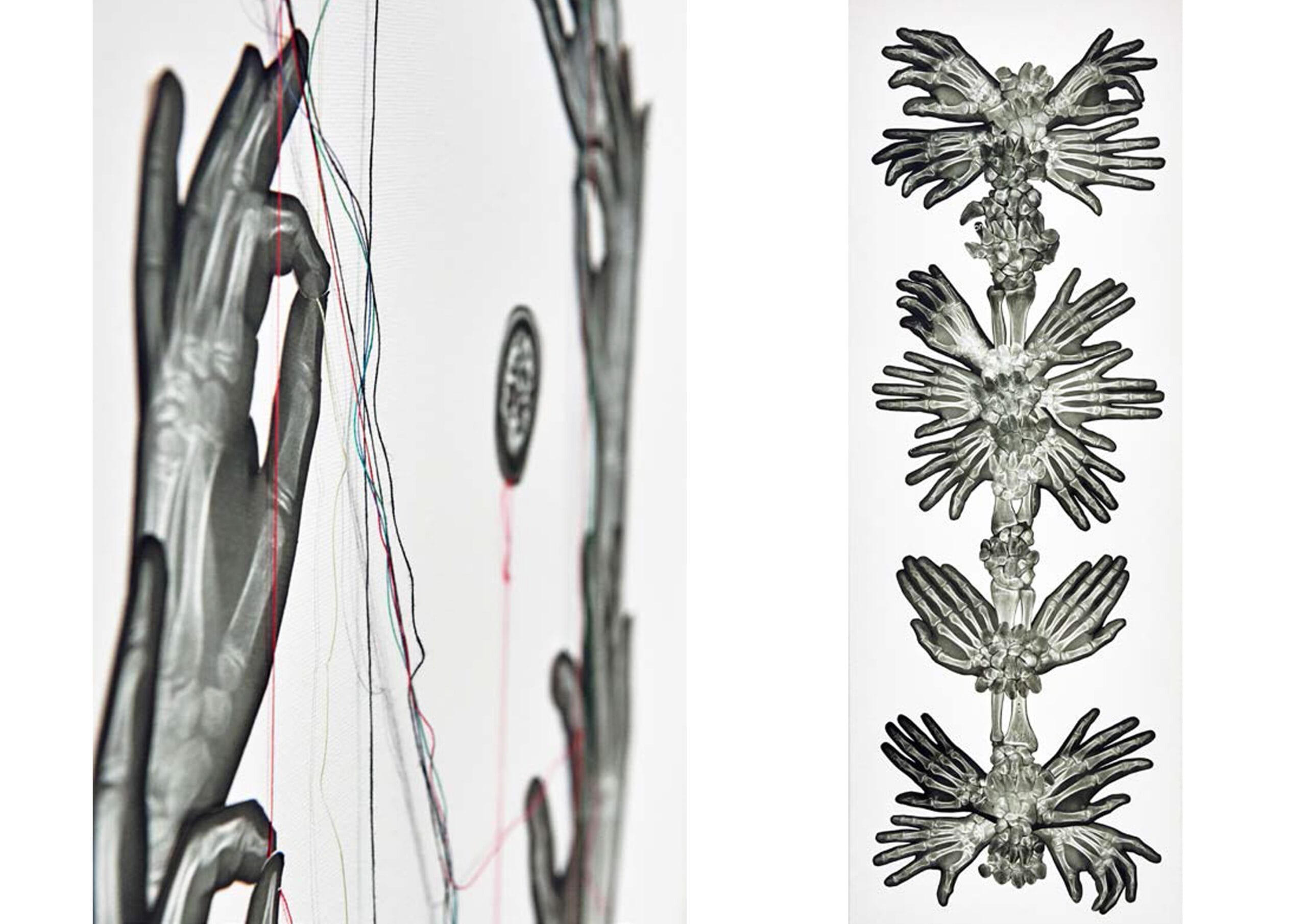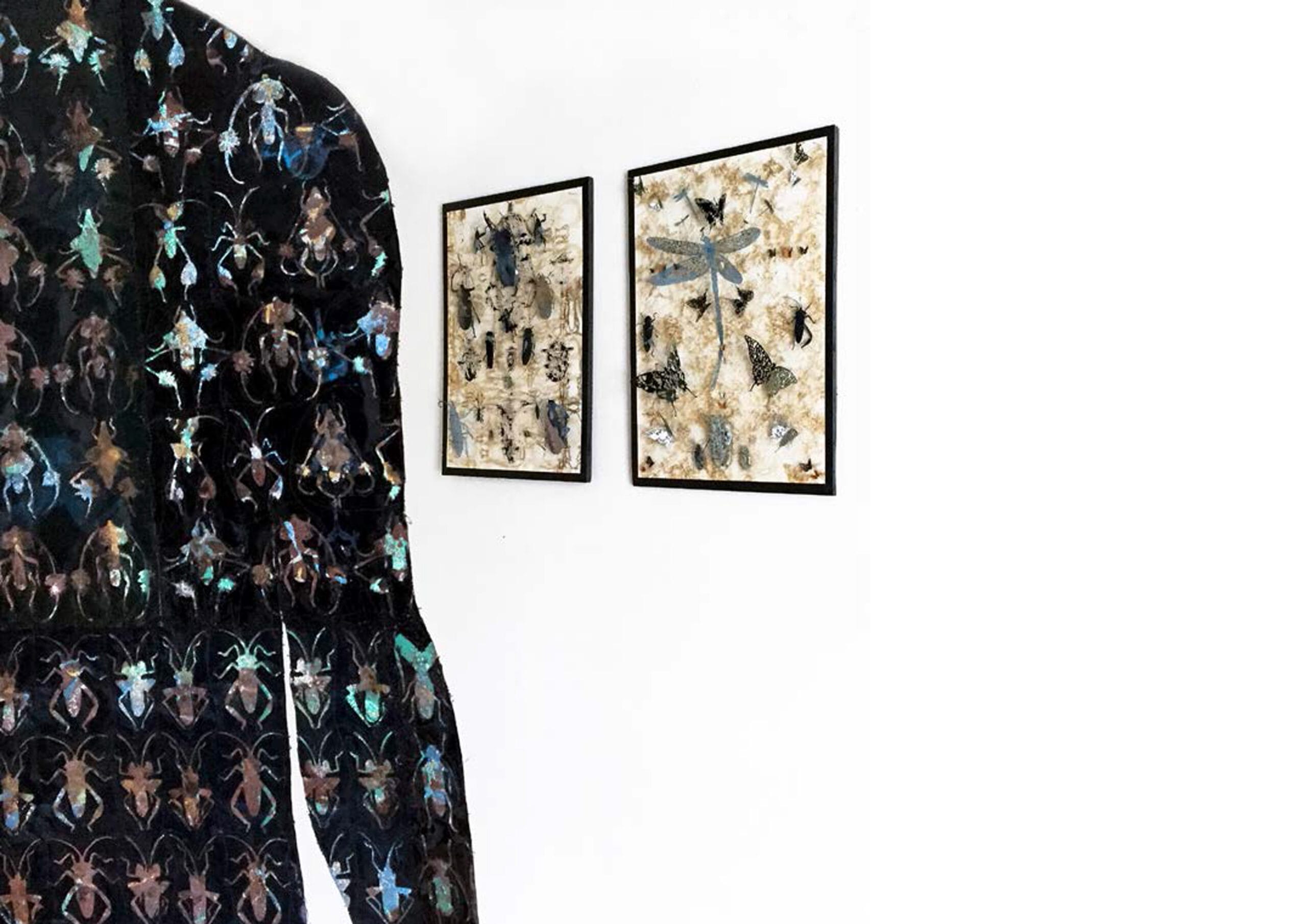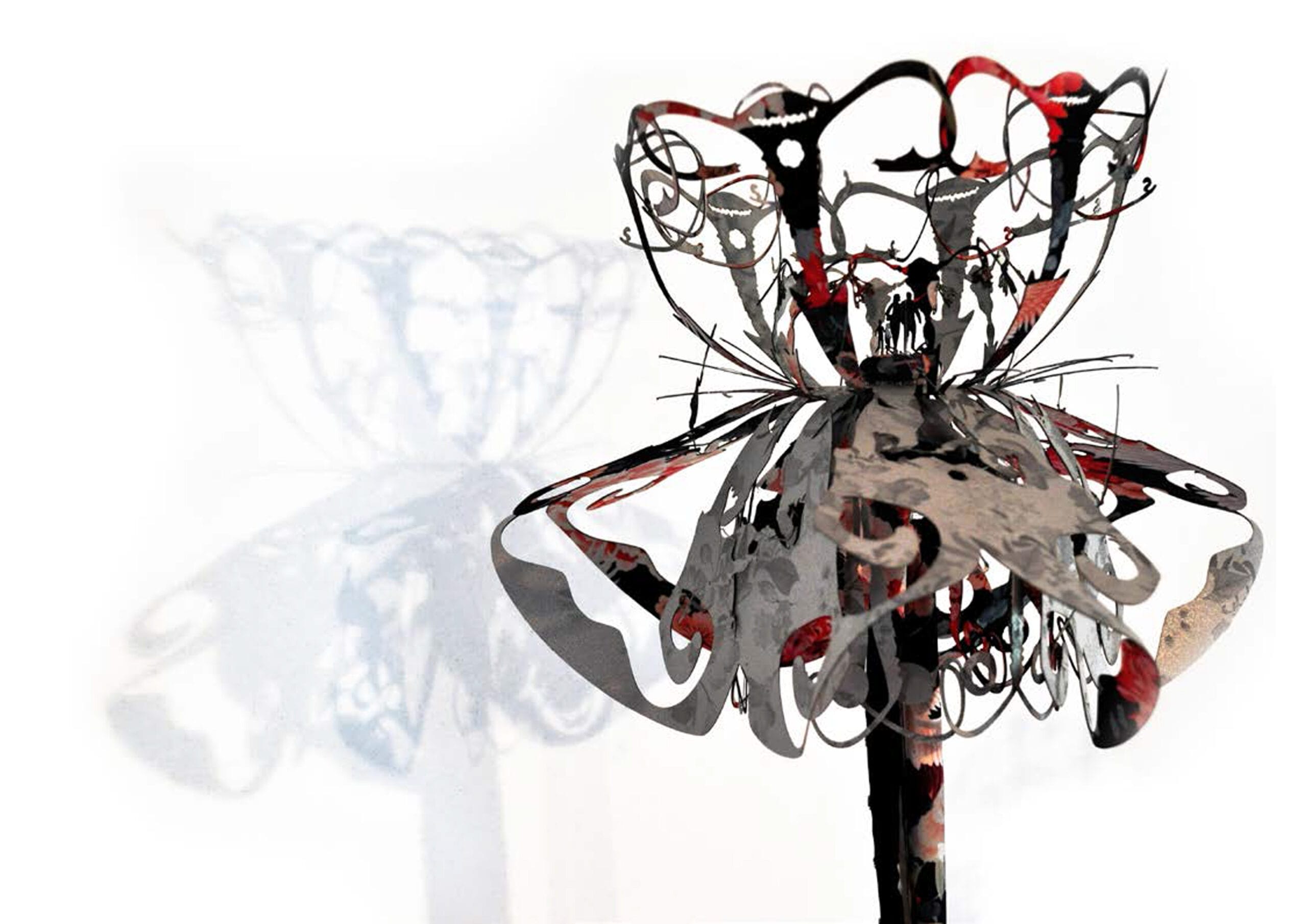BRIGITTE AMARGER. Light, nature and memory on the threshold between reality and imagination
Brigitte Amarger’s “Anthropocene” is the key to enter the French artist’s poetic view and processes.
With its organic, layered shapes and the space they suggest,this series of small works, from 2018, arouse in me a sudden curiosity and a sense of wonder.
These small-scale, three-dimensional designs appear like models for future public architectures. They seemed to be planned for a tomorrow, which is not a certainty, but that can be foreseen as a direct consequence of today’s human actions. A fictional world where constructions could be made out of human’s discarded materials. It’s easy to figure these structures built in large dimensions, the black silhouette becoming real humans that walk on them, thus bringing these spaces to life.
This series of work had the power to sparkle my imagination and provided mental space to me for multiple interpretations.
During an extensive interview with Dario Rutiliano, for a special 2020 issue of Art Haben magazine, Brigitte Amarger says that most of her work positions itself on the threshold between known reality and a world of fantasy. She says her work is made exactly to naturally inspire people to see deeper by posing questions and demanding for a personal interpretation. So, the extensive use of dreaming like images, is crucial to allow a sense of ambiguity, by provoking illusion and surprize in the viewer.
“Anthropocene” critically situates the artist in the midst of the current debate around the proposed geological epoch dating from the beginning of significant human impact on Earth’s geology and ecosystems.
In these used landscapes, the reliefs are symbolically represented by human vertebrae or animal skulls. Images of bones emerge out of a background composed by road maps and x-rays of the lungs. Lines of thread circulate, evoking by their multiple traces, the erosion left by man in nature.
The idea of the marks left by time and humans’ behaviours is made visible through the effective use of laser engravings, watermarks, soft materials; strata of unconventional techniques that succeeds in conveying the idea of a changing world.
Environmental change is an ever-present topic in Amarger’s artistic work and she addresses it critically by choosing to use wasted materials (radiographic plates) and by intentionally creating vivid allegorical images.
Seeing deeper than the eyes.
Radiography is an imaging technique using X-rays, gamma rays or similar ionizing radiation and non-ionizing radiation to view the internal form of an object. Brigitte frequently employs the X-ray’s plastic support in her artworks. The use of medical images, the transparency and ability to react to light allows the artist to investigate a key topic in her practice: the relation between visible and invisible.
“To look at an X-ray is to analyse the heart of an anatomy, to take a guided tour of intimate history, to carry out a sort of police investigation whose object is, in medicine, the search for clues and traces on a body fixed in the moment. I believe that it allows, artistically, also to feed the imagination, to foster a drift, to encourage diversion and arouse the reverie and the fantasies of the laymen.”
She finds similarities between the processes of art making, surgery and archaeology. She recognizes the same desire to discover, to look deeper, to disclose an intimate world, to reveal the invisible and get closer to the mystery of the origins.
“My artwork is an invitation to share these stories of time, memory, light, visible and invisible, life. And death.”[1]
[1]Rutigliano D. in Art Habens – Contemporary Art Review – 2020, special issue
Osmose, 2009 – 2010. Installation, variable dimension, Human bodies, Xray, flowers, leaves, threads. Laser and hand cutting, sewing, embroidery
The human body is frequently placed in dialogue with images from the natural world.
In many of her installation works, the human shapes take up the space almost becoming totemic figures. Without sex nor identity these hybrids position themselves as new critter among other beings.
The anatomy is covered by images of nature, remembering of a primeval belonging.
An evocative encounter of innovative techniques and specific materials that invite the viewers to discover an invisible world visually and conceptually reaching beyond the surface of the skin.
A world inhabited by creatures where bodily parts are composed into new anatomies, sometimes merging with elements taken from the natural sphere. Rather than seeking for a precise definition, those beings remain suspended between reality and illusion.
Anatomie, 2017 – Series of plates made from radiographic images on paper (hands, fingers, brain, sacrum, knees) and radiographic elements on canvas. Glue, laser and hand cutting
An ongoing inquiry on collective memories and private ones, developing through creative processes touching topics like communication between cultural and indigenous heritages, conservation, preservation and transmission of knowledge. An extensive archive of information layered around us, in the natural environment as well as inside of us, in the history of our life as human beings.
Coléoptères, 2016-2017. Series of beetles engraved on paper and collage on radiographs. Various insects painted on x-rays, shaped and sorted in entomological boxes and sealed under glass
Nature, whether engraved on these rarefied bodies crossed by light or extended into space in ethereal installations, is a source of fascination and attentive study. The natural world is displayed like a meditative journey to be contemplated and enjoyed but also as a constant reminder of its fragile essence and its need of care and protection.
In many of Amarger’s works, the use of photoluminescent paint conveys the bystander to a space even more suspended and magical. Her installations function as a threshold where imagination and reality merge.
Interesting is Brigitte’s intake on this liminal space and her definition of the boundaries between reality and the authenticity of one ’s sensations, memory and imagination. She speaks about this in the interview for Art Habens, 2020: “We shape our reality from past events: from our experience and knowledge, from stored images, from their internalized and recombined fragments, to invent and express a perceived, dreamed, imagined personal vision.”
In the way that the use of photoluminescent paint allows us to see in the darkness shapes otherwise imperceptible , the invisible is therefore revealed to us .
“It is certain that my work on light, which for a long time used reflective, luminescent, transparent or translucent materials to reveal the boundaries of the invisible, found new routes through its encounter with radiography and the technique of laser engraving and cutting.”
Envol. Suspended installation 9 m². Branches, small branches covered by threads; feathers and butterflies on X-ray, stones made out of glued threads. Luminescent and reflective materials. Laser cut, hand cut, glue.
In successful concert with the importance of light and its mysterious effects, the use of wasted and recycled materials enriches these works with metaphorical aspects.
Environmental awareness and the willingness to search for a more balanced and harmonic relation between human and non-human elements of our environment are palpable through her poetic and practical outcome.
Carried away by her shapes and suspended scenarios, the viewer might end up wandering in a world of fantasy where reality is read through the lenses of imagination.
An “Hymn to nature”, as Amarger’s defines it, which is not just ideal but is a call to action and intend to bring forward a critical vision on the most pressing environmental issues of our times.
In her latest work: “Homo exodus”, on display at Lucca Biennale 2021, she deals with the topic of the upcoming geographical displacements due to climate change. On the artist’s official website at http://brigitteamarger.com/ you can be updated on her upcoming projects and be inspired by her unstoppable creativity that question our world and its complex reality.
Garden of Eden, 2018, Modular installation; Reflective and printed fabrics; various threads; X-ray. Laser cutting and engraving; embroidery and machine sewing on fabric and x-rays; coatings; tubular mesh.
Brigitte Amrger is a member of ETN European Textile Network and FAF Fiber ArtFever. Maison des Artistes
Links:
brigitteamarger.com
CATALOGUE : https://www.montgeron.fr/publication/brigitte-amarger/
VIDEO : https://www.youtube.com/watch?v=df0H-NQTxco





